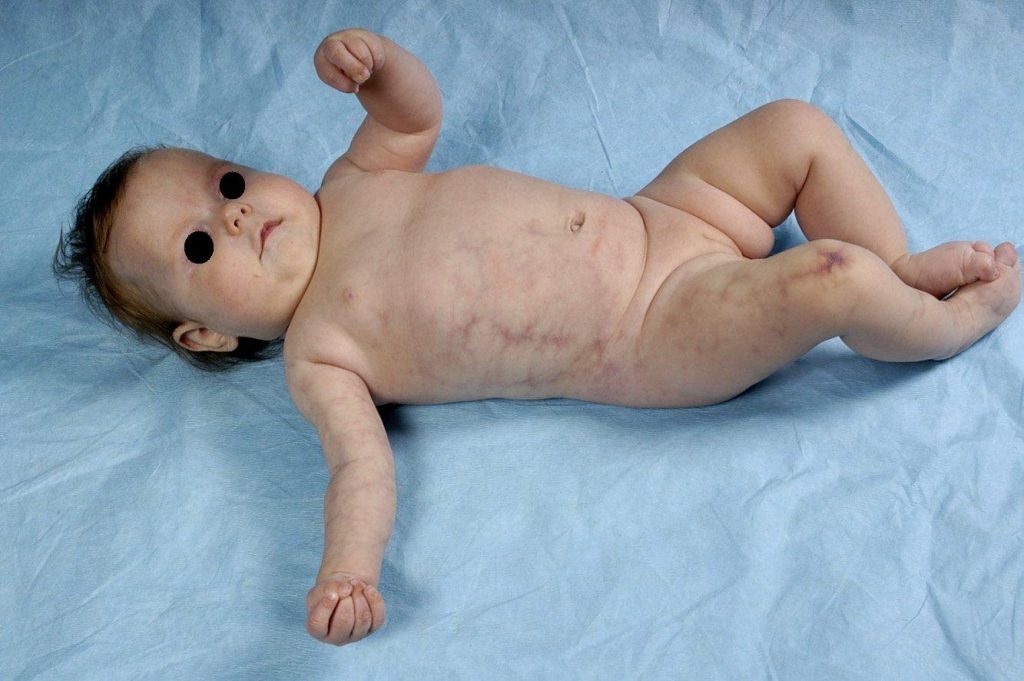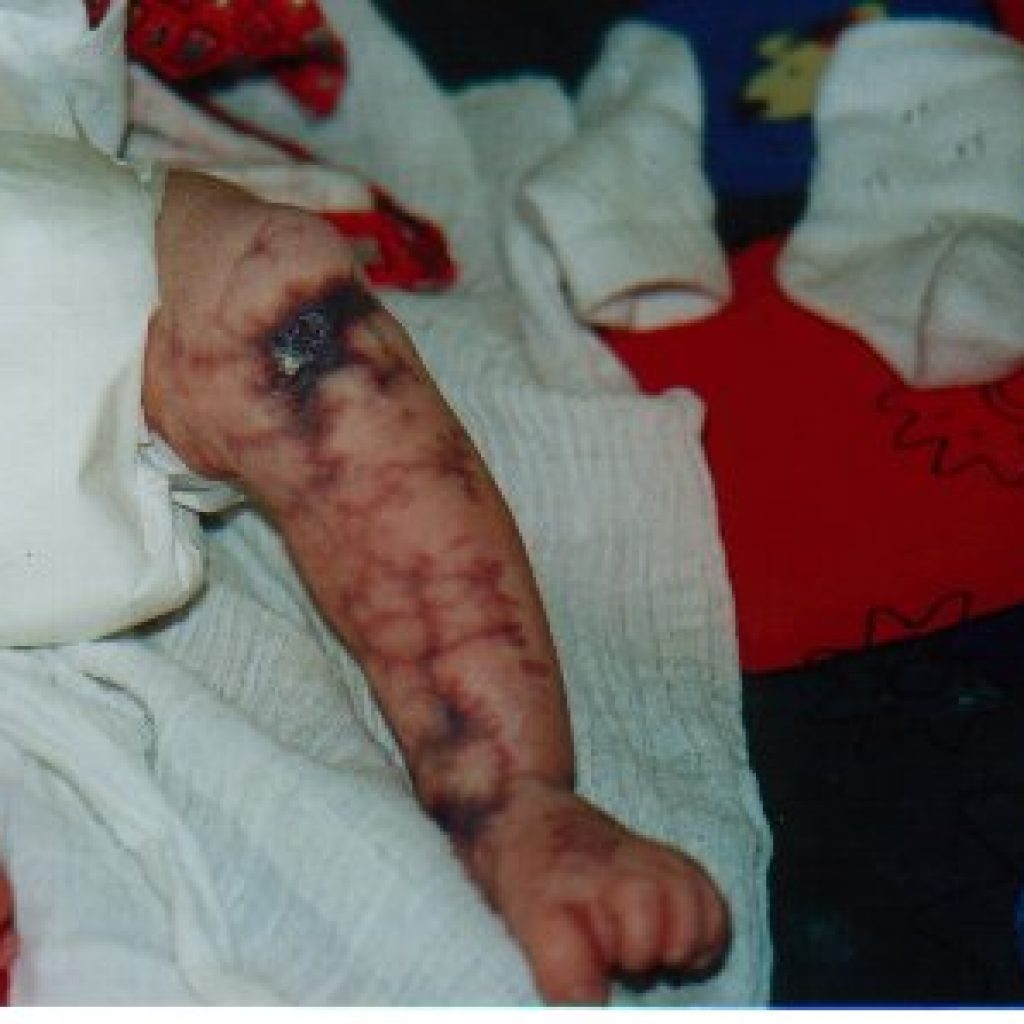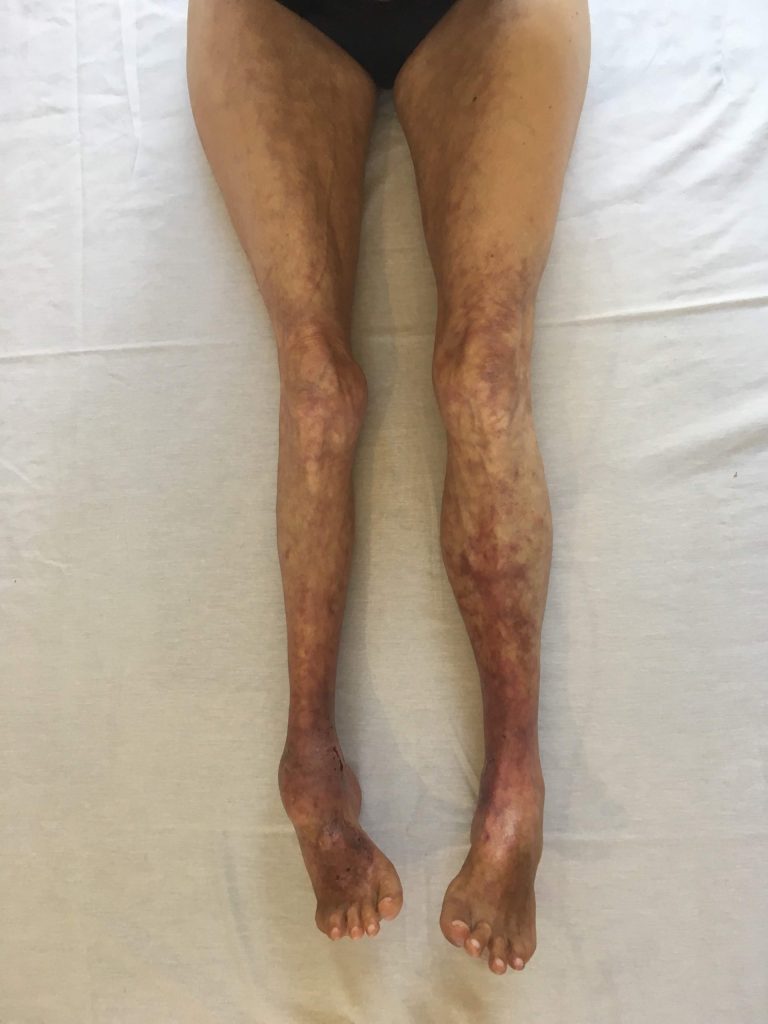Cutis Marmorata Telangiectatica Congenita (CMTC or Van Lohuizen syndrome) is a rare skin disorder which was first identified by the Dutch pediatrician ‘Van Lohuizen’ around 1920.
CMTC is a skin condition in which the dilated blood vessels through the skin shimmer. Cutis marmorata means: marbled skin. Telangiectatic means: abnormal blood vessels and congenita means: congenital.
As a rule, a portion of the skin is affected and the distribution over the body is asymmetrically, that is, one of the sides in more serious degree. The condition seems to be more common in girls than in boys. The cause is unknown. A marbled skin such as at CMTC, can also occur in newborns or under the influence of outside factors such as cold. An important difference with CMTC is that not all the marbling is present.
Little is known about the cause of CMTC. There are very few reports in the literature of parents who have CMTC like their children or of brothers and sisters with that condition. From the literature suggests that the recurrence rate of CMTC in the next child is very low. It is not certain if children of the patient is also low.
CMTC is in most cases a mild condition. A number of people with CMTC may also have other skin manifestations that occur other than the marbling of the skin. A nasty side-effect is that sometimes mouth sores can occur and that areas of locally ‘thin skin’ can occur. One speaks then of ‘atrophy’. Another uncommon deviation is an asymmetry of the limbs. Limbs can potentially be thinner (hypotrophy) but sometimes also thicker (hypertrophy). When CMTC ‘stains’ are on the head, and especially on the face, then it is advisable to visit an ophthalmologist who can examine the patient for glaucoma (increased eye pressure). A visit to a pediatric neurologist is also recommended in such cases.
Articles
Cutis marmorata telangiectatica congenita
Retinal neovascularization from a patient with Cutis Marmorata Telangiectatica Congenita








